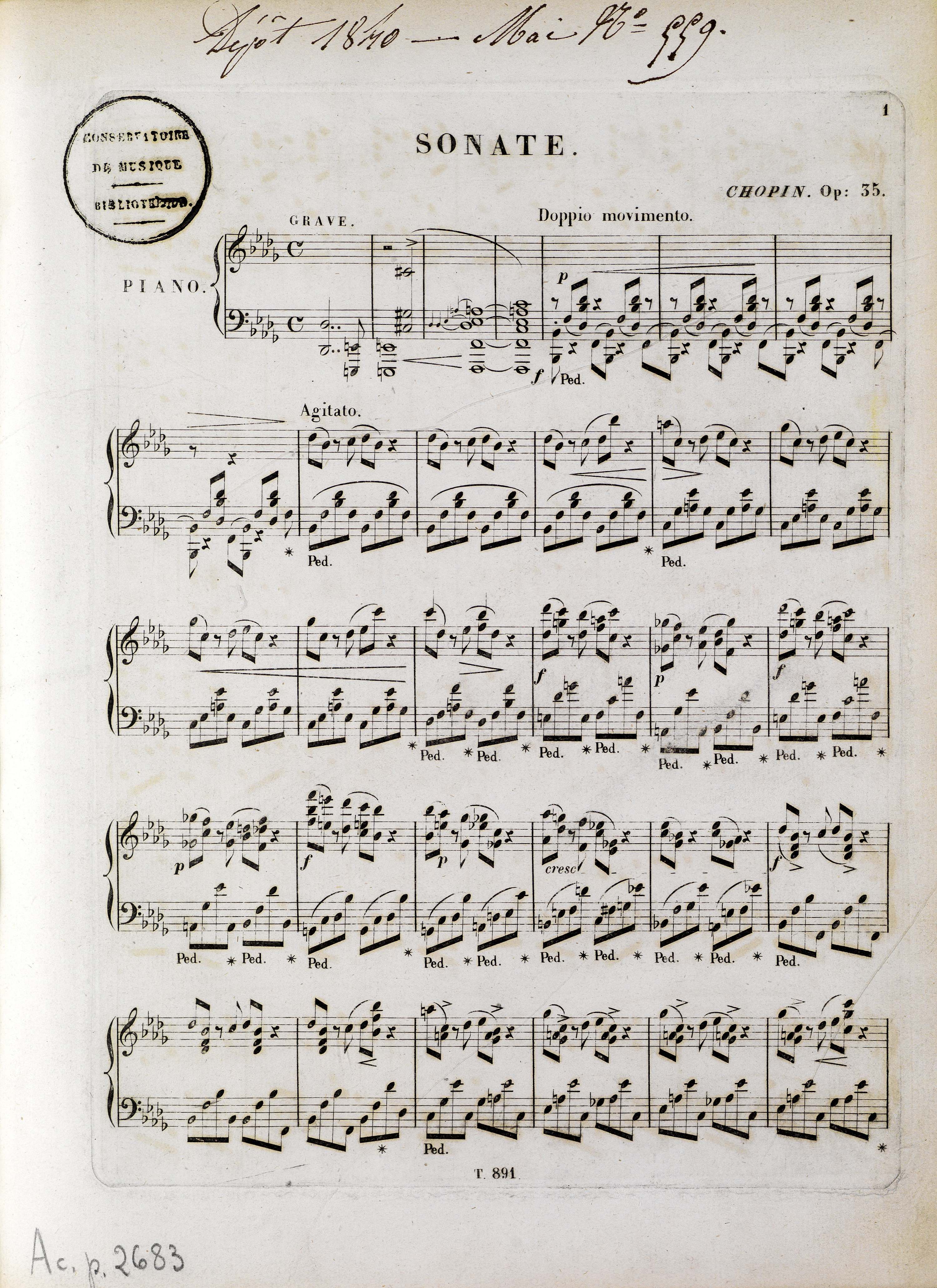




In GC the bars are separated with a double bar line, which is probably an arbitrary change introduced by the copyist (Chopin would rarely insert double bar lines, while changing the tempo or key, however, it was a commonly used practice). In GE the double bar line was arbitrarily changed to a repeat sign. It is not certain whether it is a revision or a mistake caused by a misinterpretation of the manuscript. The change, depriving the repetition of the exposition of its opening motif, was adopted in EE2 and in a vast majority of subsequent collective editions. In the main text we give a single line of FE (→EE1), which almost certainly corresponds to the notation of [A]. One can consider an addition of a slur in the L.H. in this place in the proofreading of FE3 to be another argument confirming the correctness of the text of FE – if Chopin had wanted to omit Grave at the repetition, he would have most probably noticed the absence of a repeat sign, necessary in this situation.
category imprint: Differences between sources
issues: GE revisions, Changed phrase length
notation: Shorthand & other





